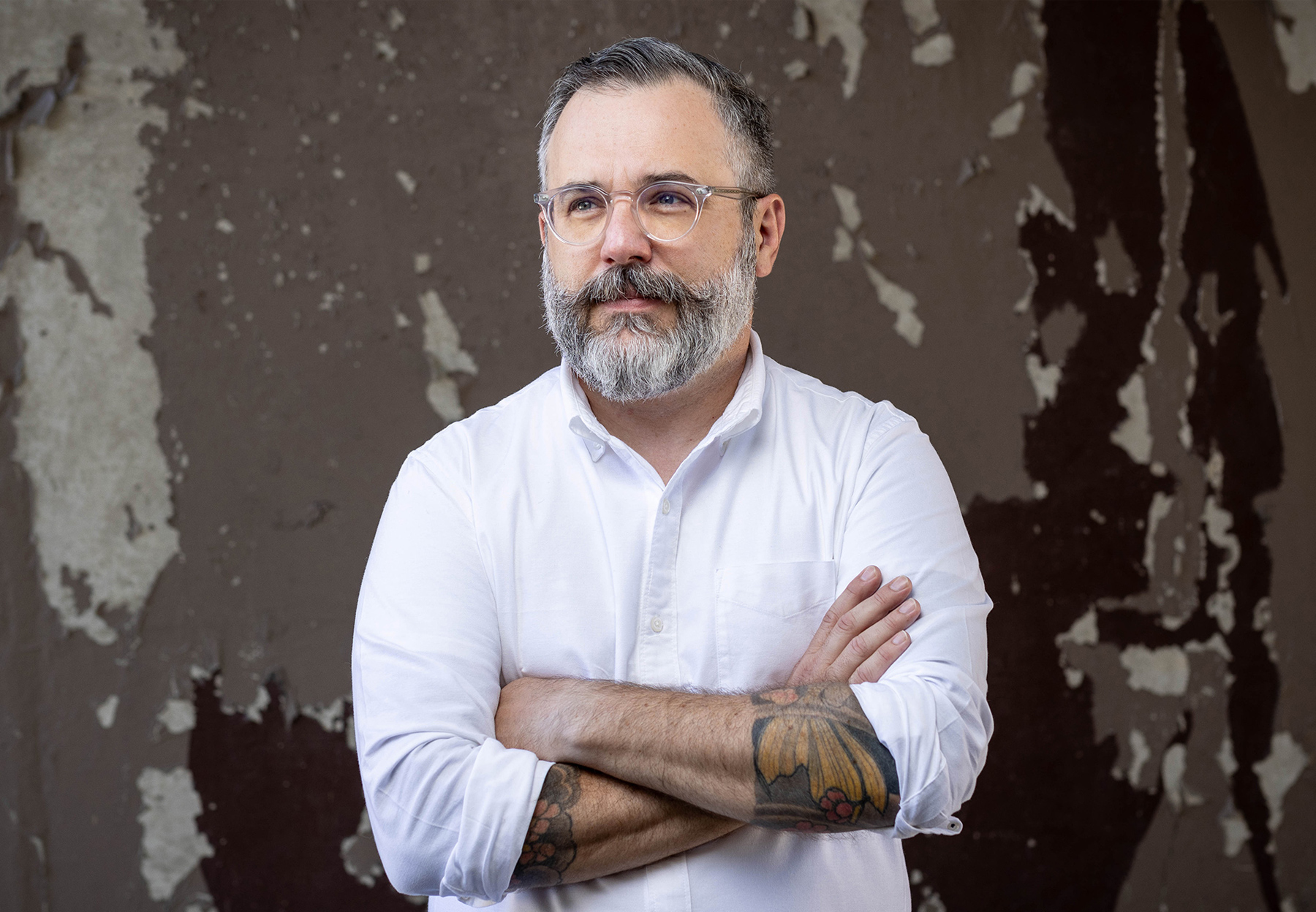A Networked Approach
Sociology professor Andrew Papachristos has been studying gun violence and intervention programs for more than two decades.
“The most common misconception about community gun violence is that it’s random,” says Papachristos, who is faculty director of CORNERS. “But we know that gun violence is linked to ongoing neighborhood disputes. And we actually know, with some of our science, where and when it’s going to happen.”
The John G. Searle Professor of Sociology in the Weinberg College of Arts and Sciences, Papachristos is world-renowned for his application of network science — the study of connections among people, institutions and other entities — to our understanding of crime, violence, policing and urban neighborhoods. He developed neighborhood- and city-level maps to show that victims and perpetrators are often part of the same social network and that violence cascades through communities, similar to the way an infectious disease spreads through a school or workplace. His maps for Chicago, Boston, Newark, N.J., Oakland, Calif., and elsewhere show the links between incidents of violence within each major city.
These network maps demonstrate that gun violence is concentrated in small social networks and exposure to violence has an enormous impact: If one person in a network gets shot, others in the network face a significant increase in their own victimization risk. Understanding how shootings are connected can inform community-based violence prevention strategies.
In 2021 Papachristos, who is also director of Northwestern’s Institute for Policy Research (IPR), founded CORNERS. Housed within IPR, the center comprises a multidisciplinary team of neuroscientists, sociologists, lawyers, social workers, data scientists, geographers and others who collect data and update these network maps to analyze the reach and impact of gun violence — and, importantly, the impact of violence reduction initiatives.
CORNERS works closely with community violence intervention (CVI) programs, which provide a broad range of services intended to improve community members’ lives, including mental health services, legal support, mentorship, and recreational and educational opportunities.
CVI programs typically operate in communities that have been disproportionately affected by racism and economic and educational inequities. They rely on teams of street outreach workers and victim advocates like Miles to de-escalate conflicts and offer resources to those most at risk of violence.
CVI workers often live in or near the neighborhoods in which they work. Many have experienced gun violence themselves, and some CVI workers were formerly incarcerated or involved with gangs. With their on-the-ground knowledge of the social connections within a given area, Papachristos says, CVI workers can diffuse conflicts and even prevent gun violence. But their work extends far beyond violence prevention — CVIs are “community institutions,” he says.
“A lot of times, young adults do not have mentors. They don’t have people who are giving them a stern hand but love at the same time,” Miles explains. “CVIs provide guidance and a nonjudgmental environment. They help people understand that you don’t have to take a life in order to get what you need.”

 Of
Of 
 Northwestern researchers found a
Northwestern researchers found a  A Northwestern analysis of Communities Partnering 4 Peace showed that participants experienced a
A Northwestern analysis of Communities Partnering 4 Peace showed that participants experienced a 



Reader Responses
This is EXACTLY the type of research threatened by scattershot government cuts. It took years to get federal funding for gun violence studies. Time to support the continuation of this vital work.
—Mickey Stuart '77, Redmond, Wash.
No one has commented on this page yet.
Submit a Response